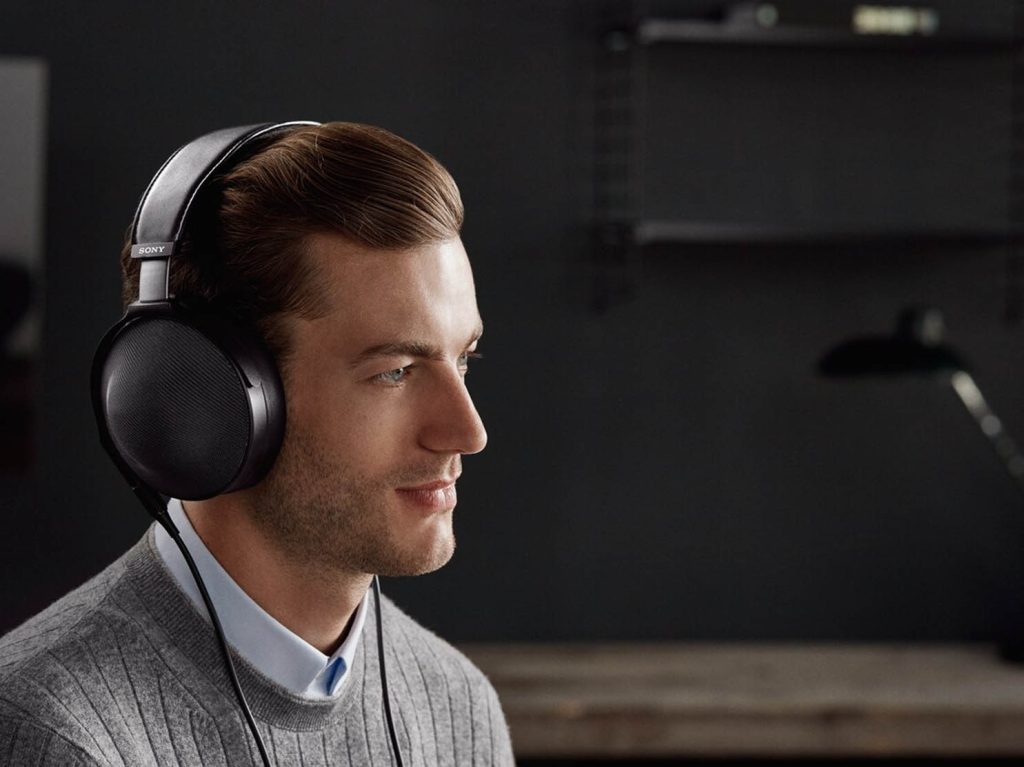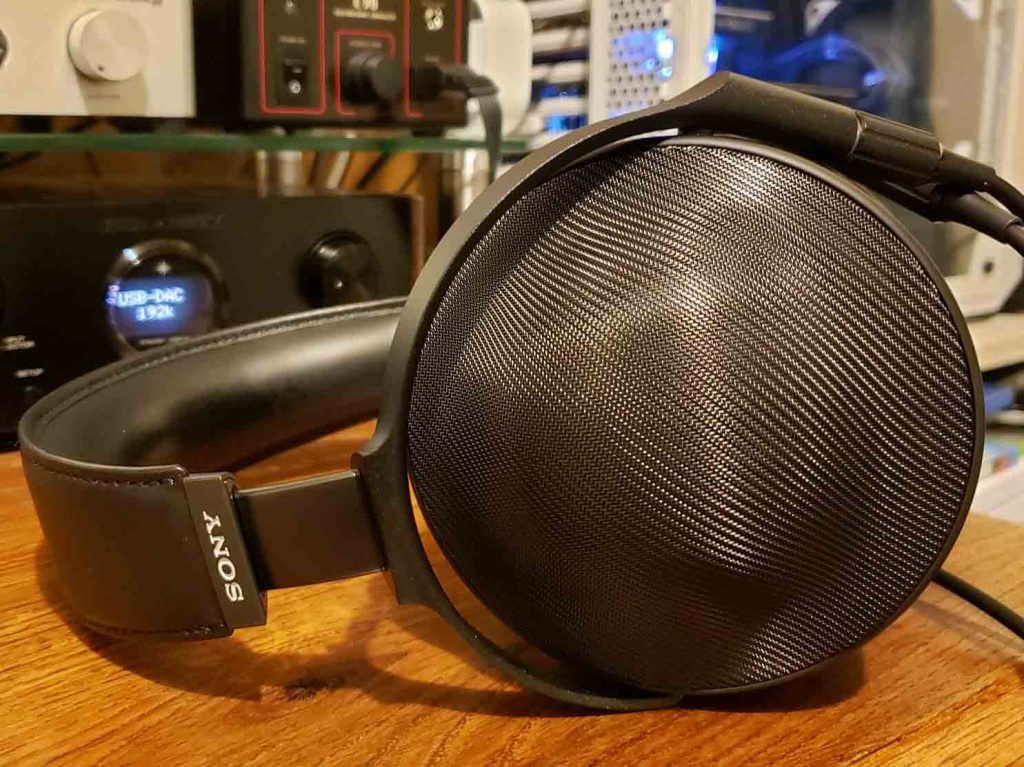As an electronics product reviewer, I often receive various questions from my followers about headphone choices, especially when it comes to high-resolution audio experiences. With the constant advancement of sound technology, the high-end headphone market has gradually opened up to users who seek the ultimate sound quality. In this field, Sony’s MDR-Z1R and Focal’s Utopia headphones have always been representatives of top-tier audio quality. Both headphones are regarded as pinnacle models in the realm of high-resolution audio, but they have significant differences in design philosophy, sound performance, and comfort. Today, we will take a deep dive into comparing these two headphones and see how they perform in the 2025 market.
1. Product Overview
Sony MDR-Z1R
The Sony MDR-Z1R is designed for high-end audio enthusiasts, focusing on detailed sound performance and dynamic range. As one of Sony’s flagship headphones, the MDR-Z1R features a 70mm large-diameter driver, aimed at providing an extremely wide soundstage and true-to-life bass performance. The design of this headphone reflects Sony’s relentless pursuit of sound quality, utilizing high-quality materials such as lightweight aluminum alloy frames and high polymer resin earcups to ensure durability and comfort.
Focal Utopia
The Focal Utopia is a flagship dynamic headphone from Focal, featuring Focal’s exclusive “full-range driver” (M-shaped beryllium driver) for highly accurate sound reproduction. The design combines precise craftsmanship with extraordinary sound quality, offering audiophiles an unparalleled listening experience. Utopia emphasizes not only the finesse and precision of the sound but also clarity in spatial representation and high-level resolution.
2. Design and Comfort
Sony MDR-Z1R
The MDR-Z1R follows Sony’s high-end style, presenting a clean, modern look. The large earcups give it a bold and imposing appearance. The earcups are made from premium leather and microfiber materials, offering a soft touch and good breathability, ensuring comfort during extended listening sessions. For most users, the MDR-Z1R is quite comfortable, and while the earcups are large, the lightweight design prevents it from feeling too heavy or uncomfortable.
However, the MDR-Z1R’s earcups are relatively bulky, and although comfortable, some users who are sensitive to headphone fit might feel slight pressure, especially during long-term use.
Focal Utopia
The design of the Focal Utopia is more refined, showcasing Focal’s high-end craftsmanship. It uses pure aluminum earcups and a metal frame, giving it a strong metallic feel and a modern, elegant design. The earcups are made from soft lambskin leather and memory foam padding, ensuring comfort and breathability. Even during long listening sessions, users rarely feel discomfort, as the earcups’ proper size and high-quality leather materials enhance the overall comfort.
However, due to the sturdy metal shell, the Utopia is somewhat heavier, which can lead to slight pressure during extended wear. Users accustomed to lighter headphones might need a period of adaptation.

3. Sound Performance Comparison
Low-Frequency Performance
- Sony MDR-Z1R: The MDR-Z1R delivers a powerful low-frequency response, particularly in terms of bass extension, offering users an immersive sound experience. The 70mm driver allows for a richer low-end detail, especially in the deep bass, making it ideal for genres like electronic music and rock. The bass is punchy and controlled, without feeling overwhelming, providing excellent balance.
- Focal Utopia: The Focal Utopia’s bass is more refined and controlled compared to the MDR-Z1R. Thanks to the M-shaped beryllium driver, the Utopia provides more precise bass positioning and a cleaner low-end performance. While the bass isn’t as pronounced as the MDR-Z1R’s, it excels at delivering clarity and avoiding muddiness, giving users a more defined and clean bass experience.
Mid-Frequency Performance
- Sony MDR-Z1R: The MDR-Z1R features a very rich midrange, particularly in the lower-mid frequencies, with a strong sense of detail. Vocals, especially female voices, are presented with warmth and emotional depth. Overall, the midrange is somewhat laid-back and relaxed, making it ideal for long listening sessions.
- Focal Utopia: The Utopia shines in the midrange, providing exceptionally clear and transparent sound. The M-shaped beryllium driver endows the Utopia with unmatched detail retrieval, even in the most complex audio passages. Whether male or female vocals, the Utopia reproduces them with remarkable realism. The midrange is clean and transparent, offering high-quality sound reproduction, especially in the upper-midrange frequencies.
High-Frequency Performance
- Sony MDR-Z1R: The MDR-Z1R offers good extension in the high frequencies, especially in the mid-high range, where the sound is clear and airy. Its highs are not overly sharp or sibilant, focusing more on detail. While the clarity in the high frequencies is commendable, the headphone can sometimes be more conservative in handling extreme high frequencies compared to the Utopia.
- Focal Utopia: The Utopia’s high-frequency performance is extraordinarily refined. Thanks to its unique beryllium driver, it achieves top-tier clarity and extension. The highs are highly transparent, presenting fine details and a layered sound. For those who favor high-resolution audio, the Utopia excels in showcasing every intricate detail, especially in classical music or high-resolution recordings, where the highs are more pronounced compared to the MDR-Z1R.
4. Soundstage and Imaging
- Sony MDR-Z1R: The MDR-Z1R provides an exceptionally wide soundstage, particularly in the 3D sound reproduction, offering a vast spatial experience. Whether in electronic music or rock, the MDR-Z1R delivers an immersive listening experience with precise imaging and clear separation of layers.
- Focal Utopia: The Utopia’s soundstage positioning is even more precise, though its width is slightly narrower than that of the MDR-Z1R. However, it excels in musical imaging and detail retrieval. Whether listening to a large orchestral work or a small ensemble, the Utopia can precisely position each instrument, offering unmatched detail and spatial clarity.

5. Compatibility and Price-to-Performance Ratio
Sony MDR-Z1R
The MDR-Z1R is ideal for those who value powerful bass and a wide soundstage, making it particularly suited for fans of electronic music, rock, or movie soundtracks. If you enjoy a heavy bass impact and an immersive experience, the MDR-Z1R is a great choice. Compared to the Focal Utopia, the MDR-Z1R is more budget-friendly and offers a higher price-to-performance ratio.
Focal Utopia
The Focal Utopia is better suited for audiophiles who seek the highest level of sound reproduction and resolution. It is particularly appealing to fans of classical music, jazz, or high-fidelity sound experiences. Though the Utopia’s price is higher, its exceptional sound performance justifies the cost, delivering an outstanding high-resolution audio experience that surpasses the MDR-Z1R in terms of clarity, precision, and overall sound quality.
Sony MDR-Z1R and Focal Utopia both represent the pinnacle of high-resolution audio, yet their sound characteristics and design philosophies are different. The MDR-Z1R leans towards a stronger low-end and expansive soundstage, making it ideal for users who love an immersive listening experience. On the other hand, the Focal Utopia shines with its precise imaging, clear mid-high frequencies, and transparency in the highs, making it perfect for audiophiles seeking ultimate sound clarity and resolution. Whichever headphone you choose, both will provide you with an unparalleled audio experience.